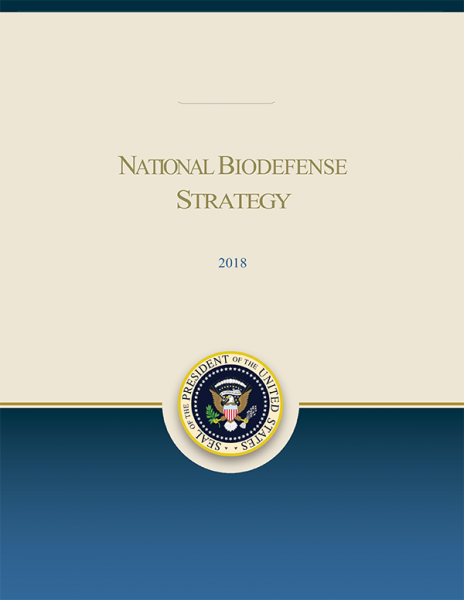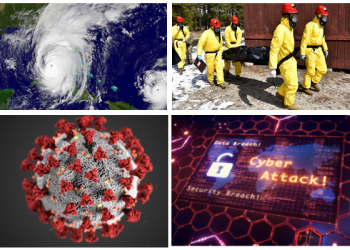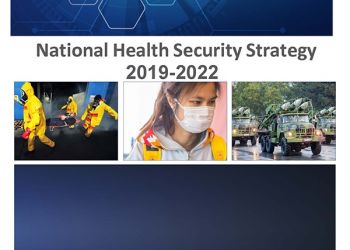The National Biodefense Strategy (NBS) aims to advance the U.S. health security enterprise through prevention, preparedness, response, recovery, and mitigation efforts to combat infectious disease and biological threats.1 In response to the diverse, complex, and ever-changing 21st century health security environment, the NBS continues to play an integral role in improving preparedness to disasters and public health emergencies.
The Office of the Assistant Secretary for Preparedness and Response (ASPR) within the Department of Health and Human Services (HHS) coordinates the development, implementation, and evaluation of the NBS and National Health Security Strategy (NHSS).2,3 The NBS is aligned with the NHSS and serves as a strategic document outlining how the United States actively and effectively manages its activities to assess, prevent, prepare for, respond to, and recover from biological threats. Additionally, the NBS serves to provide a single coordinated effort to orchestrate the full range of activity that is carried out across the U.S. Government to protect the American people from biological threats.1 The biodefense enterprise is a collaborative effort among U.S. federal departments and agencies as well as non-governmental stakeholders such as the private sector, industry, and academia.4
The goals of the NBS are:
- Enable risk awareness to inform decision-making across the biodefense enterprise.
- Ensure biodefense enterprise capabilities to prevent bioincidents.
- Ensure biodefense enterprise preparedness to reduce the impacts of bioincidents.
- Rapidly respond to limit the impacts of bioincidents.
- Facilitate recovery to restore the community, the economy, and the environment after a bioincident.4
Achieving the above goals requires interagency cooperation outlined by the NBS and Presidential Memorandum on the Support for Biodefense to ensure biodefense efforts are integrated, comprehensive, efficient, and effective.5 Participation is essential from federal, state, local, territorial, tribal, and other governments, practitioners, physicians, scientists, educators, and industry.6
The following are examples of activities conducted by federal departments and agencies.7 These activities represent progress made by the nation in bringing U.S. biodefense capabilities closer in line with the goals of the NBS.
- Moving towards influenza vaccine modernization:
- The National Institute of Allergy and Infectious Diseases (NIAID) launched the first clinical trial for a universal vaccine candidate.
- The Centers for Disease Control and Prevention (CDC), in partnership with private hospitals and pharmacies nationwide, launched the website MedFinder to help people find pharmacies that have antiviral drugs available making it easier to know where to go to get your prescription filled.
- Biosafety and biosecurity communication and guidance:
- ASPR launched the S3: Science, Safety, Security resource portal, which promotes communication, transparency, and awareness about biosafety, biocontainment, and laboratory biosecurity issues and activities in laboratories.
- HHS released planning guidance for handling solid waste contaminated with Category A infectious substance.
- The HHS Antimicrobial Resistance (AMR) Challenge was launched to better protect people, animals, and the environment from antibiotic resistance.8 By the end of 2019, the AMR Challenge resulted in:
- 350 commitments from private and governmental groups spread across all 50 states and 31 additional countries to combat AMR.
- Improved infection control, with commitments from 4,000 health care facilities in the U.S. and an additional 6,000 worldwide.
- COVID-19 tools and resources to support state, local, tribal, and territorial (SLTT) partners:
- One Health toolkit for public health and animal health officials, “One Health Approach to Address Companion Animals with SARS-CoV-2.”
- Community Mitigation Framework aids SLTT stakeholders in integrating mitigation strategies for local COVID-19 transmission into their current practices and future plans.
- COVID-19 Surge tool provides hospital administrators and local public health officials a way to estimate the surge in demand for hospital-based services during the COVID-19 pandemic.
This article is the third in a series of articles aimed to provide education regarding key national health security concerns such as new and evolving 21st century health threats, federal government mitigation strategies used to support SLTT authorities, and future health security priorities. Please continue to follow this topic series as we further cover the following features of national health security concerns and corresponding mitigation strategies:
- Examining the National Health Security Strategy Through a Local Health Department Lens
- Health Security Issues of Concern from the Federal Government Perspective
- Looking to the Future: Informing Development of the 2023-2026 NHSS
1. U.S. Department of Health & Human Services, Office of the Assistant Secretary for Preparedness and Response. National Biodefense Strategy. Retrieved on June 20, 2021 from: https://www.phe.gov/Preparedness/biodefense-strategy/Pages/default.aspx
2. U.S. Department of Health & Human Services, Office of the Assistant Secretary for Preparedness and Response. HHS Office of the Assistant Secretary for Preparedness and Response. Retrieved on June 20, 2021 from: https://www.phe.gov/about/aspr/Pages/default.aspx
3. U.S. Department of Health & Human Services, Office of the Assistant Secretary for Preparedness and Response. National Health Security Strategy (NHSS). Retrieved on June 20, 2021 from: https://www.phe.gov/Preparedness/planning/authority/nhss/Pages/default.aspx
4. U.S. Department of Health & Human Services, Office of the Assistant Secretary for Preparedness and Response. National Biodefense Strategy: Goals and Objectives. Retrieved on June 20, 2021 from: https://www.phe.gov/Preparedness/biodefense-strategy/Pages/goals-and-objectives.aspx
5. The White House. Presidential Memorandum on the Support for National Biodefense. Retrieved on June 20, 2021 from: https://trumpwhitehouse.archives.gov/presidential-actions/presidential-memorandum-support-national-biodefense/
6. U.S. Department of Health & Human Services, Office of the Assistant Secretary for Preparedness and Response. National Biodefense Strategy: Interagency Coordination. Retrieved on June 20, 2021 from: https://www.phe.gov/Preparedness/biodefense-strategy/Pages/interagency-collection.aspx
7. U.S. Department of Health & Human Services. 2019 Biodefense Public Report: Implementation of the National Biodefense Strategy. Retrieved on August 6, 2021 from: https://www.phe.gov/Preparedness/biodefense-strategy/2019-report/Documents/2019-Biodefense-Public-Report-508.pdf
8. U.S. Department of Health & Human Services, Centers for Disease Control and Prevention. The AMR Challenge. Retrieved on August 6, 2021 from: https://www.cdc.gov/drugresistance/intl-activities/amr-challenge.html


